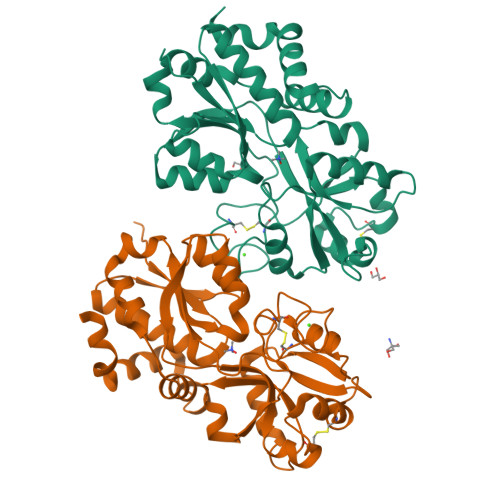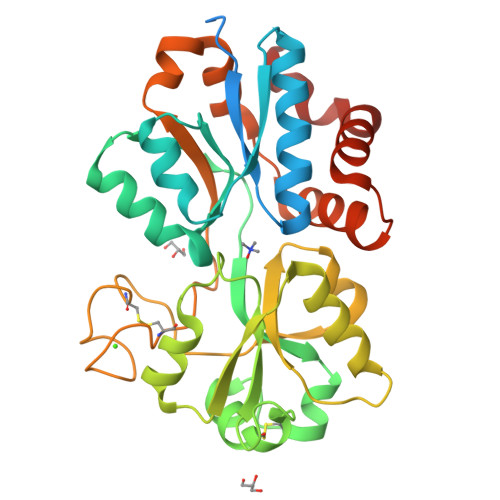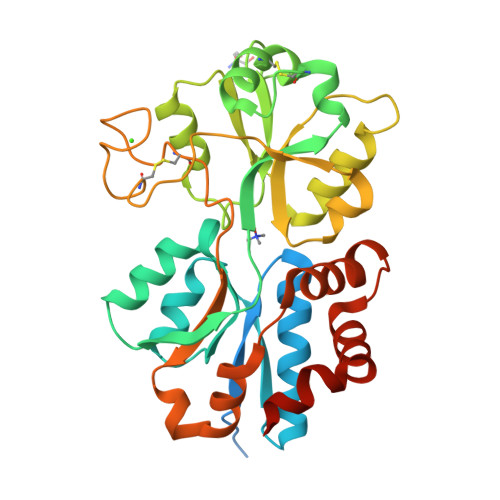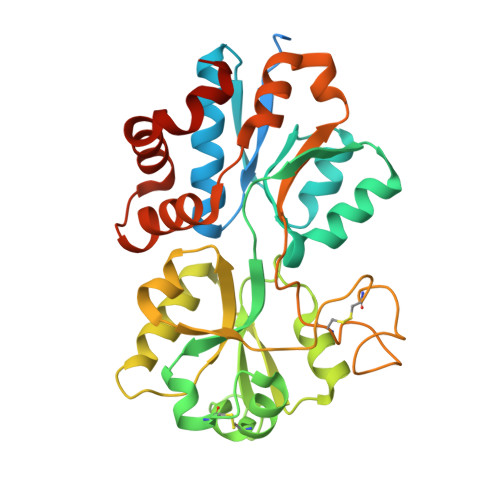Mechanistic Insight into Trimethylamine N-Oxide Recognition by the Marine Bacterium Ruegeria pomeroyi DSS-3
Li, C.Y., Chen, X.L., Shao, X., Wei, T.D., Wang, P., Xie, B.B., Qin, Q.L., Zhang, X.Y., Su, H.N., Song, X.Y., Shi, M., Zhou, B.C., Zhang, Y.Z.(2015) J Bacteriol 197: 3378-3387
- PubMed: 26283766
- DOI: https://doi.org/10.1128/JB.00542-15
- Primary Citation of Related Structures:
4XZ6 - PubMed Abstract:
Trimethylamine N-oxide (TMAO) is an important nitrogen source for marine bacteria. TMAO can also be metabolized by marine bacteria into volatile methylated amines, the precursors of the greenhouse gas nitrous oxide. However, it was not known how TMAO is recognized and imported by bacteria. Ruegeria pomeroyi DSS-3, a marine Roseobacter, has an ATP-binding cassette transporter, TmoXWV, specific for TMAO. TmoX is the substrate-binding protein of the TmoXWV transporter. In this study, the substrate specificity of TmoX of R. pomeroyi DSS-3 was characterized. We further determined the structure of the TmoX/TMAO complex and studied the TMAO-binding mechanism of TmoX by biochemical, structural, and mutational analyses. A Ca(2+) ion chelated by an extended loop in TmoX was shown to be important for maintaining the stability of TmoX. Molecular dynamics simulations indicate that TmoX can alternate between "open" and "closed" states for binding TMAO. In the substrate-binding pocket, four tryptophan residues interact with the quaternary amine of TMAO by cation-π interactions, and Glu131 forms a hydrogen bond with the polar oxygen atom of TMAO. The π-π stacking interactions between the side chains of Phe and Trp are also essential for TMAO binding. Sequence analysis suggests that the TMAO-binding mechanism of TmoX may have universal significance in marine bacteria, especially in the marine Roseobacter clade. This study sheds light on how marine microorganisms utilize TMAO. Trimethylamine N-oxide (TMAO) is an important nitrogen source for marine bacteria. The products of TMAO metabolized by bacteria are part of the precursors of the greenhouse gas nitrous oxide. It is unclear how TMAO is recognized and imported by bacteria. TmoX is the substrate-binding protein of a TMAO-specific transporter. Here, the substrate specificity of TmoX of Ruegeria pomeroyi DSS-3 was characterized. The TMAO-binding mechanism of TmoX was studied by biochemical, structural, and mutational analyses. Moreover, our results suggest that the TMAO-binding mechanism may have universal significance in marine bacteria. This study sheds light on how marine microorganisms utilize TMAO and should lead to a better understanding of marine nitrogen cycling.
Organizational Affiliation:
State Key Laboratory of Microbial Technology, Shandong University, Jinan, China Marine Biotechnology Research Center, Shandong University, Jinan, China.























